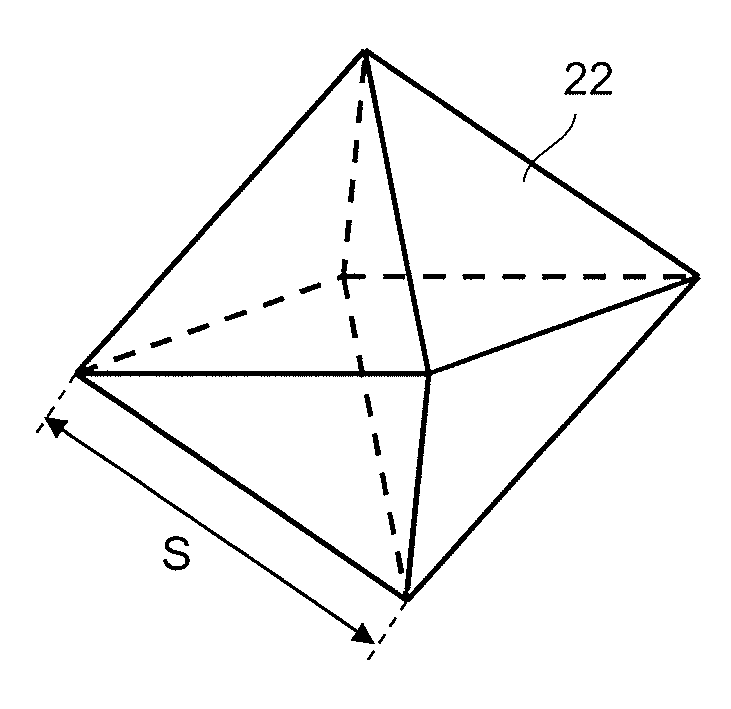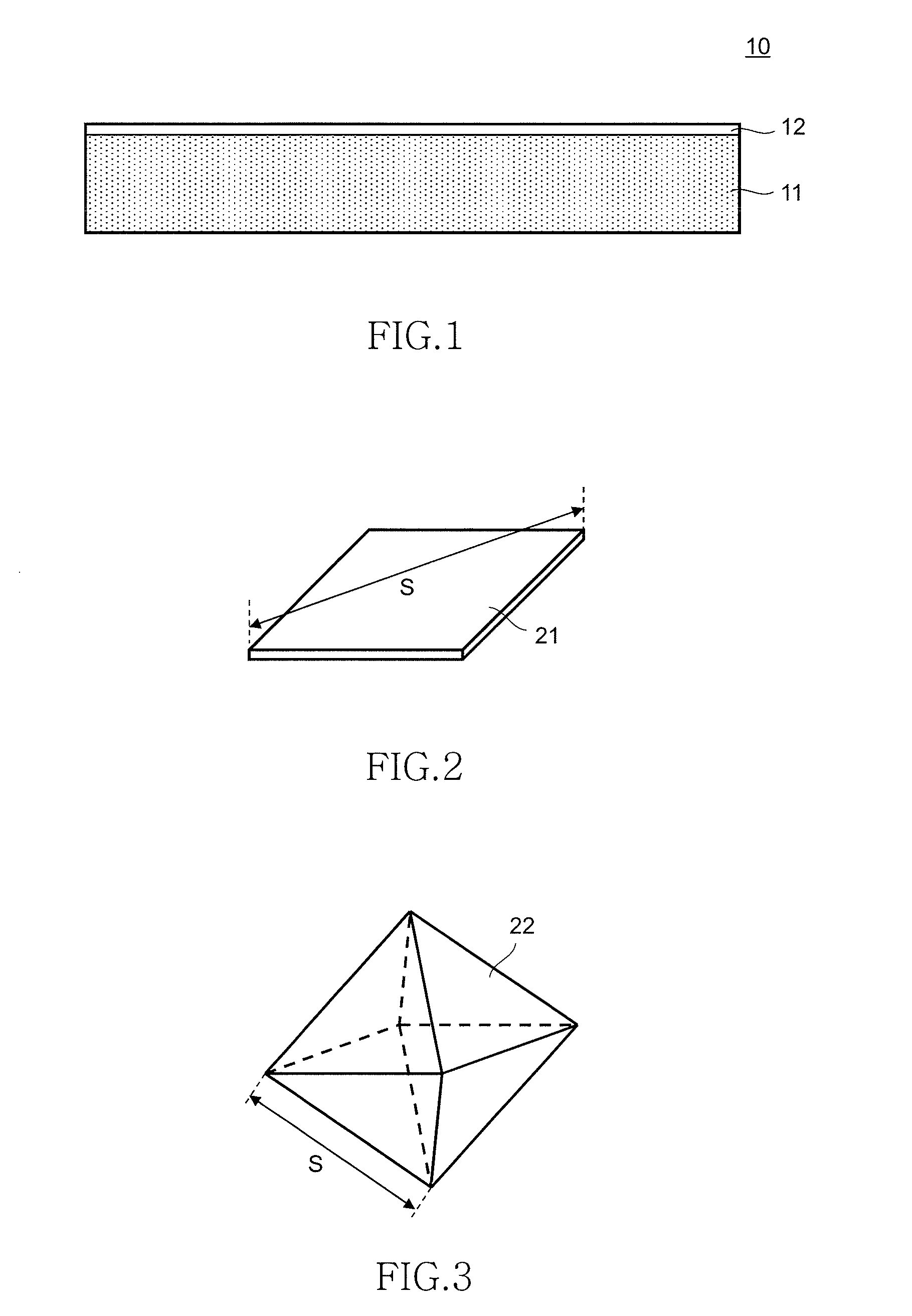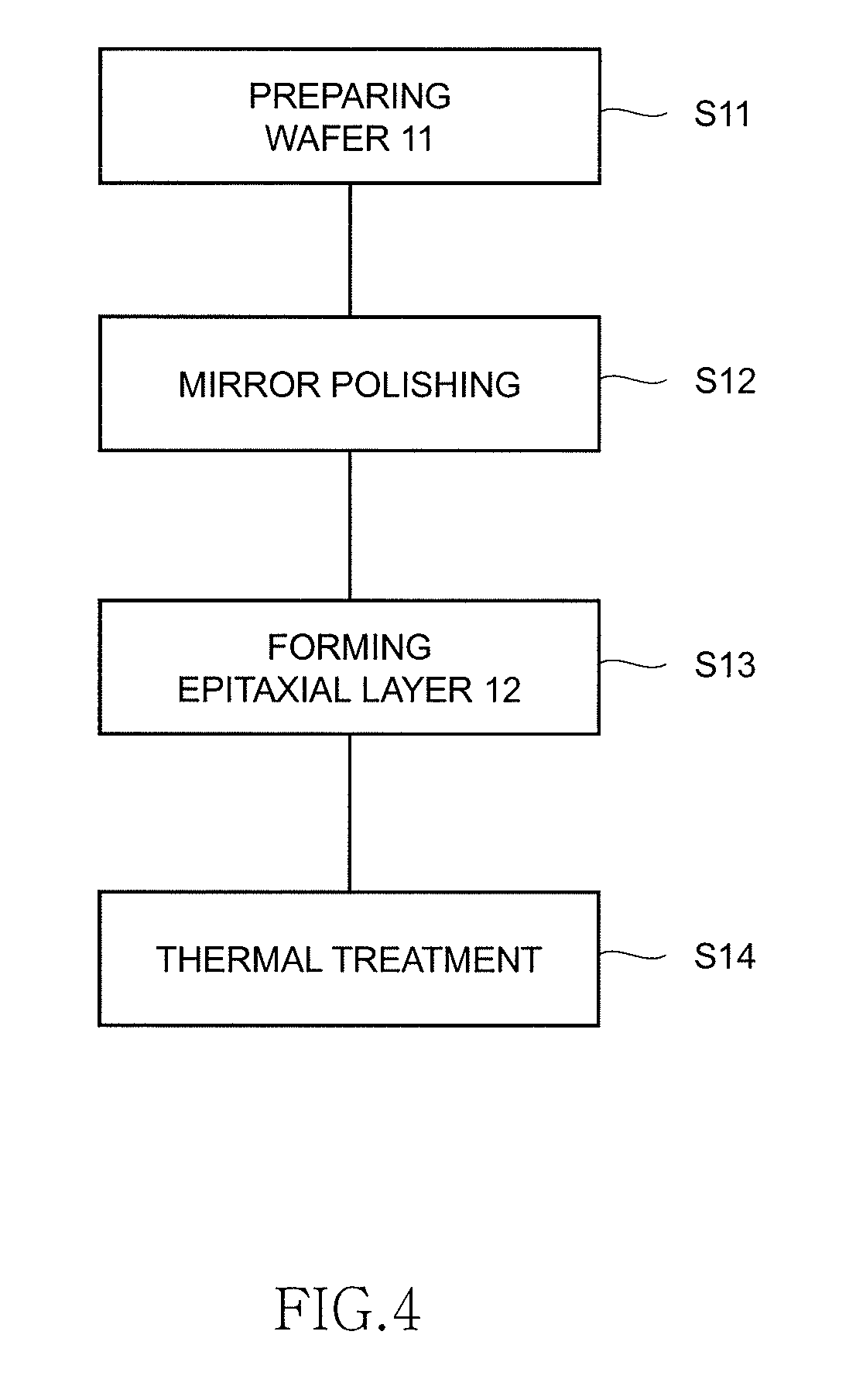Silicon wafer and method of manufacturing thereof, and method of manufacturing semiconductor device
a technology of silicon wafers and semiconductor devices, applied in the field of silicon wafers, can solve the problems of increasing sub-threshold current, strong thermal stress inside the wafer, and the channel length of mos transistors, so as to prevent the occurrence of dislocation and prevent the effect of dislocation
- Summary
- Abstract
- Description
- Claims
- Application Information
AI Technical Summary
Benefits of technology
Problems solved by technology
Method used
Image
Examples
example 1
[0070]A plurality of polished wafers with an interstitial oxygen concentration of 12.5×1017 atoms / cm3 and a diameter of 300 mm were prepared. The wafers were subjected to various kinds of thermal treatments, and oxygen precipitates of different sizes and shapes were formed. The sizes and shapes of the precipitates were identified as different samples to which the same kinds of thermal treatment were applied were measured and observed under a transmission electron microscope (TEM). Table 1 shows the sizes and shapes of the precipitates that exist in a region extending to a depth of 50 μm or less from the outer layer of the wafer.
[0071]Then, the LSA treatment was applied to each wafer on which precipitates were formed. The maximum temperature on the wafer surface of each sample is shown in Table 1. After the LSA treatment, an X-ray topography device was used to confirm whether or not dislocation had occurred.
[0072]As a result, as shown in Table 1, in Samples 1 to 24 whose oxygen preci...
example 2
[0074]The following wafers were prepared: a 300 mm epitaxial wafer in which an epitaxial layer was formed on a wafer doped with nitrogen, and a 300 mm epitaxial wafer in which an epitaxial layer was formed on a wafer doped with boron. The doping amounts are shown in Table 2. The interstitial oxygen concentration of the wafer of each sample was 11.5×1017 to 13.6×1017 atoms / cm3.
[0075]The epitaxial wafers were inserted into a vertical furnace kept at 700° C. After the temperature was increased to a predetermined temperature at a predetermined rate, the temperature was kept for a predetermined period of time. For each sample, the temperature-rising rate, retention temperature, and retention time are shown in Table 2. After the thermal treatment, the temperature was lowered to 700° C. at a temperature-lowering rate of 3° C. per minute, and the wafers were taken out. In this manner, precipitate nuclei were formed on the wafer bodies. However, the above thermal treatment was omitted for Sa...
example 3
[0080]The following wafers were prepared: a 300 mm epitaxial wafer in which an epitaxial layer was formed on a wafer doped with nitrogen, and a 300 mm epitaxial wafer in which an epitaxial layer was formed on a wafer doped with boron. The doping amounts are shown in Table 3. The interstitial oxygen concentration of the wafer of each sample was 11.5×1017 to 13.6×1017 atoms / cm3.
[0081]The epitaxial wafers were inserted into a vertical furnace kept at 700° C. After the temperature was increased to a predetermined temperature at a rate of 5° C. per minute, the temperature was kept for 5 minutes. For each sample, the retention temperature is shown in Table 3. After the thermal treatment, the temperature was lowered to 700° C. at a temperature-lowering rate of 3° C. per minute, and the wafers were taken out. In this manner, precipitate nuclei were formed on the wafer bodies.
[0082]Then, the precipitate nuclei grew as thermal treatment was carried out on each sample at 850° C. for 30 minutes...
PUM
| Property | Measurement | Unit |
|---|---|---|
| temperature | aaaaa | aaaaa |
| melting point | aaaaa | aaaaa |
| temperature | aaaaa | aaaaa |
Abstract
Description
Claims
Application Information
 Login to View More
Login to View More - R&D
- Intellectual Property
- Life Sciences
- Materials
- Tech Scout
- Unparalleled Data Quality
- Higher Quality Content
- 60% Fewer Hallucinations
Browse by: Latest US Patents, China's latest patents, Technical Efficacy Thesaurus, Application Domain, Technology Topic, Popular Technical Reports.
© 2025 PatSnap. All rights reserved.Legal|Privacy policy|Modern Slavery Act Transparency Statement|Sitemap|About US| Contact US: help@patsnap.com



